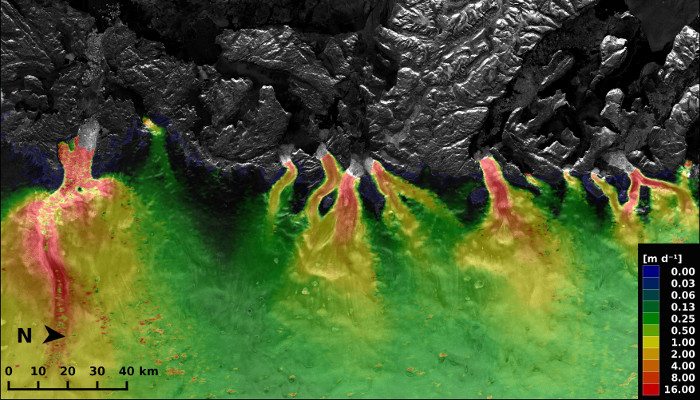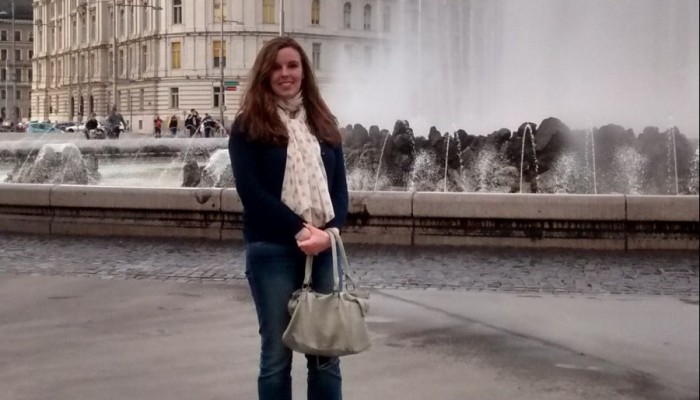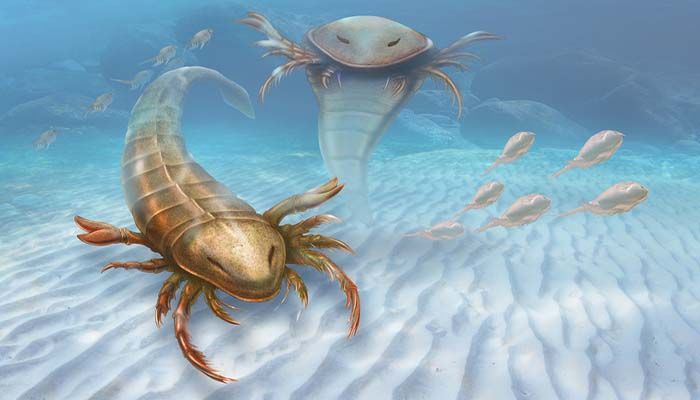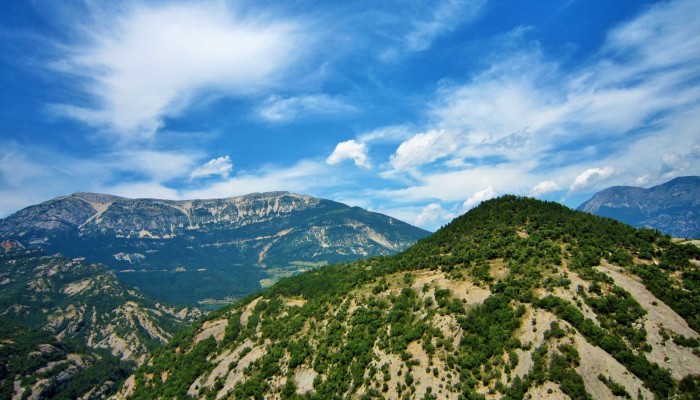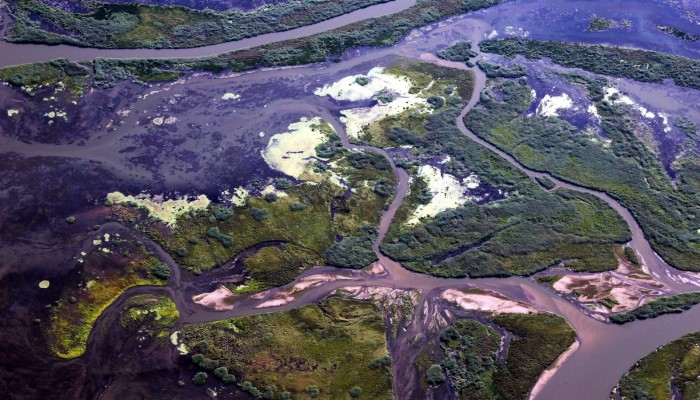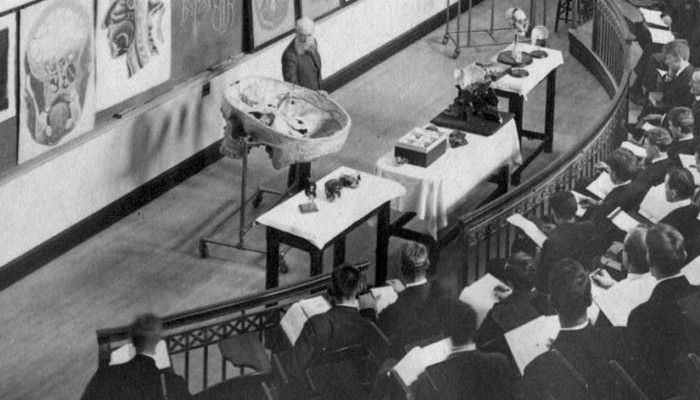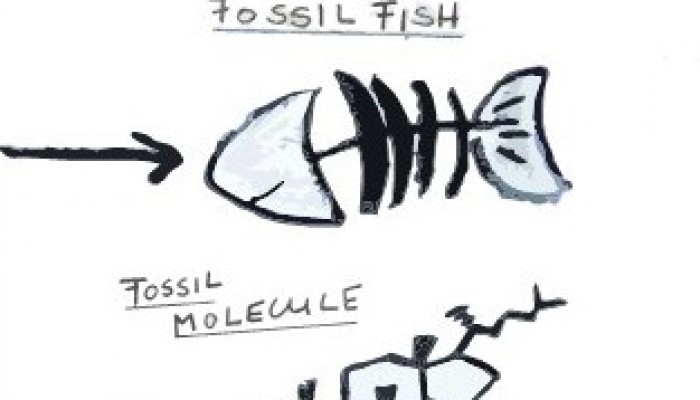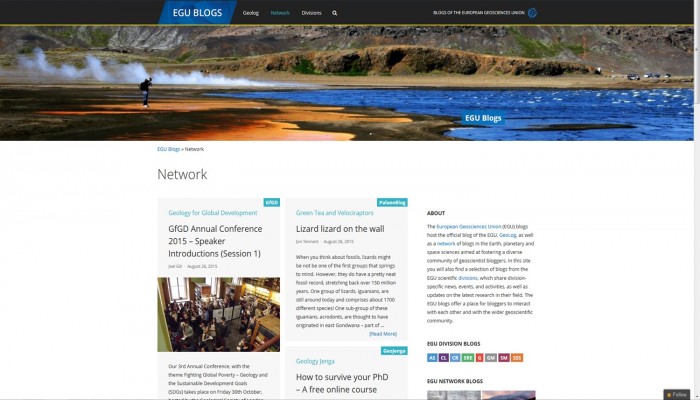This image is from the west coast of Greenland and it shows several glaciers flowing towards the sea (upper part of the image), transporting ice into the ocean. The colours show the velocity of the ice. As the ice gets nearer to the coast it speeds up reaching speeds over 15m/day. The velocities were calculated using two Sentinel-1A radar scans from 3 and 15 January 2015. You can download a high r ...[Read More]
GeoLog
Meet the EGU’s new Science Policy Fellow
I seem to have moved to Munich at the perfect time – glorious weather and three weeks before Oktoberfest! My name is Sarah and I’ve joined EGU as their Science Policy Fellow – a position created to implement science-policy related activities for EGU scientists. Before Munich, I studied a Masters in Chemistry at the University of York, which included my final year being spent in industry working in ...[Read More]
Green Tea and Velociraptors
The rise of open research data
This was originally posted at: http://exchanges.wiley.com/blog/2015/08/26/the-rise-of-open-research-data/ As a junior researcher in the UK, it has given me great pleasure over the last few years to see the dramatic development of open access publishing. Most major research funders in the UK now require public access to published research articles in one form or another, and many other research int ...[Read More]
GeoLog
Geosciences Column: The Oldest Eurypterid
The name of a newly found fossil of sea scorpion draws inspiration from ancient Greece warships and is a unique example of exceptional preservation, shedding light on the rich life of this bygone sea critter, explains David Marshall of Palaeocast fame. To learn more about the importance of giving new fossils names and what Pentecopterus decorahensis (as the new fossil is formally called) teaches u ...[Read More]
GeoLog
Imaggeo on Mondays: Mola de Lord
From the easterly Atlantic waters of the Bay of Biscay to the Catalan wild coast (Costa Brava) in the west, the Spanish Pyrenees stretch 430 km across the north of the country. At the foothills of the Catalan Pyrenees you’ll find the Pre-Pyrenees. Despite not reaching the soaring heights of the peaks of the Pyrenees, they nonetheless offer important insights into the geology of the range and stunn ...[Read More]
Energy, Resources and the Environment
Living with water: A closer look at deltas
Costal deltas often host large cities due to their prime location of where rivers meet the sea. In many cases these areas have been protected from rising sea levels and flooding rivers by engineered ‘gray’ infrastructure. However, this infrastructure appears to only protect these cities on short timescales. Engineered deltas contribute to relative sea level rise, caused by shrinking land masses in ...[Read More]
GeoLog
GeoEd: A Framework Too Far?
In this month’s edition of GeoEd, Sam Illingworth, former ECS PC representative and Lecturer of Science Communication at Manchester Metropolitan University, talks about a new framework introduced by the UK government to measure the quality of teaching at higher education institutions. Although Sam explores the issue from a UK perspective, there is no doubt cross over within the European realm. Als ...[Read More]
GeoSphere
Geology Photo of the Week #46
This week’s photo brings us back to the world of geochemistry. I don’t have much information on this photo beyond that it was taken in Italy. However, if I may speculate a little it looks like these crystals may possibly be volcanic in origin and the fact that it was taken in Italy, which is famous for its volcanic sulphur deposits. I say this because such crystals are often found nea ...[Read More]
Green Tea and Velociraptors
Welcome to guest blogger Dr. Sabine Lengger!
Hi readers of “Green tea and Velociraptors”, my name is Sabine Lengger, I am a scientist, and I am an avid reader of Jon’s blog too. I started out my scientific career as a chemist / biochemist, and became more and more fascinated by the fields of environmental chemistry and molecular palaeontology. Since Jon spends all day [apparently] writing his thesis these days and asked for a guest writer, I ...[Read More]
GeoLog
Join the EGU Blog Network!
After announcing earlier this week that we are sadly saying goodbye to the EGU network blog Between a Rock and Hard Place, the time has come to find a new blog to take their place. If you are an Earth, planetary or space researcher (a PhD student, an early career scientist, or a more established one) with a passion for communicating your work, we’d like to hear from you! We currently feature blogs ...[Read More]

